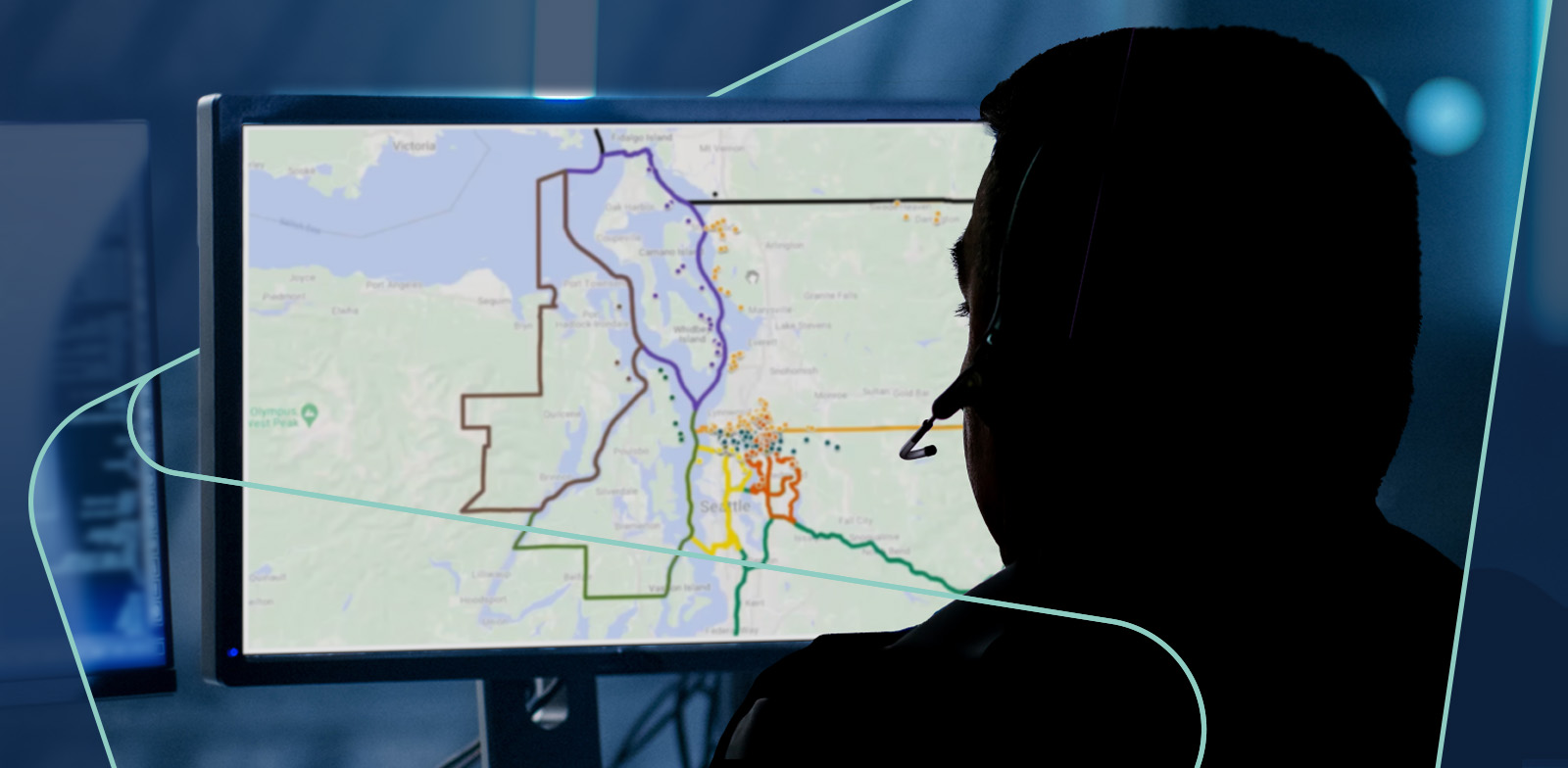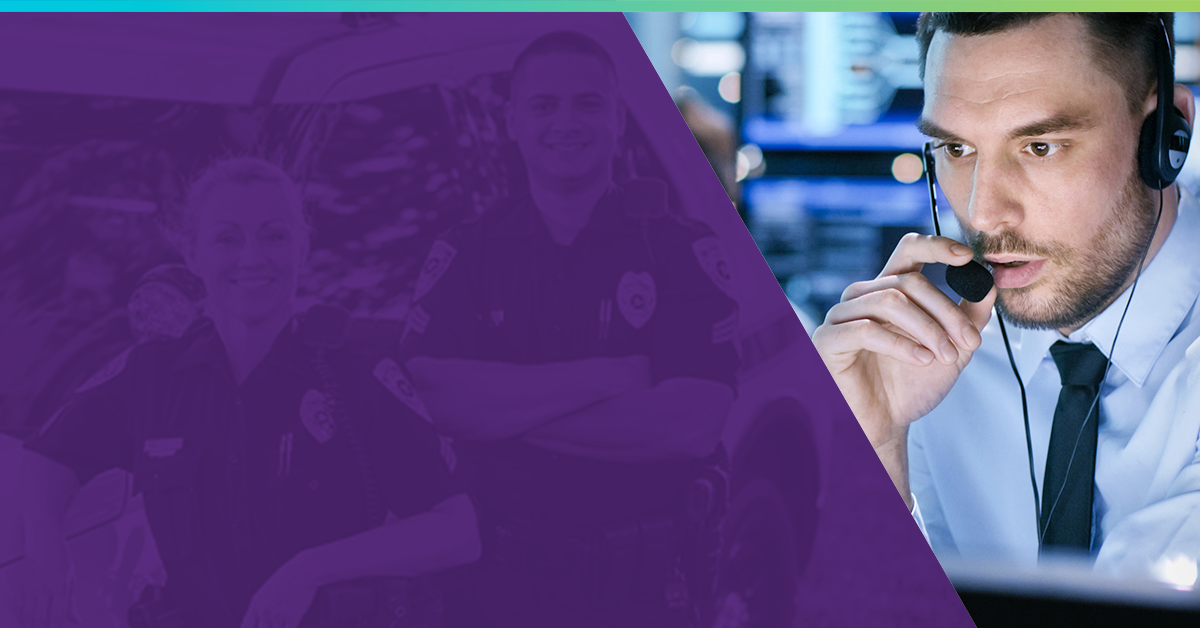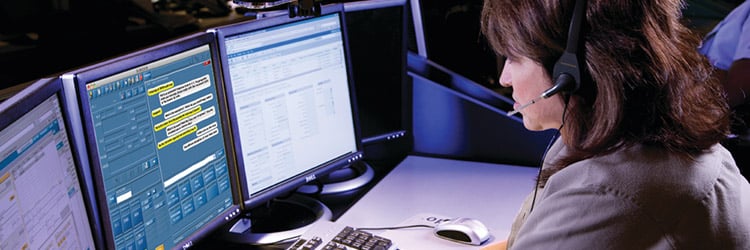Transforming How 911 Calls are Routed to Public Safety: Introducing Locate Before Route
Intrado recently launched its location-based routing feature for wireless 911 callers, Locate Before Route. This new industry-first technology...
3 min read
Oct 8, 2024
Natural disasters, such as hurricanes, present unique challenges to 911 Emergency Communication Centers (ECCs) and Public Safety Answering Points (PSAPs) across the United States. As storms approach and make landfall, these centers must manage a diverse array of emergencies. Intrado’s Emergency Call Relay Center — or ECRC — is 911 for 911, which means we serve as a critical backup for ECCs and PSAPs nationwide. We support these 911 centers when call volumes spike, network or power outages occur, or when satellite-enabled devices are used.
One of the most significant challenges during hurricanes is the widespread loss of power, which can affect the types of calls coming into 911 centers. On a typical day in the ECRC, approximately 70% of the daily call volume comes from VoIP and Enterprise subscribers. However, these systems require power to function, so when power is lost, many people in affected areas may not be able to make emergency calls.
In regions with extensive hurricane experience, such as Florida, Louisiana, and Mississippi, we may not see a drastic uptick in call volume during storms. These areas are often well-prepared for hurricanes and have made the necessary plans to ensure the continuity of 911 services. During Hurricane Helene, for example, the ECRC observed a minor increase in call volume overall. This could be attributed to power outages and local residents’ preparedness for these types of emergencies in areas that experience hurricanes more frequently.
In contrast, less hurricane-prone areas can experience significant spikes in call volume. Our ECRC received four times the normal call volume for the North Carolina area, highlighting the substantial impact on that region.
While direct calls to our ECRC don’t always to surge during a hurricane, we often experience overflow from carrier networks. The ECRC serves as a tertiary route when these carrier networks become overwhelmed with call volume. When this happens, Intrado’s team of telecommunicators must act quickly to manage the excess calls and, if necessary, transfer them to backup or alternate PSAPs and ECCs.
This is no easy feat. 911 centers handling storm-related emergencies are often at capacity and may be hesitant to accept additional calls. Establishing strong partnerships and maintaining clear communication with these agencies is essential to ensure every call gets the attention it deserves. Our team’s ability to convey the urgency of the situation and our dedication to getting help to those in need is paramount.
Not all regions experience hurricanes with the same frequency, which creates varying levels of 911 call surges depending on the area impacted. In areas like Houston during Hurricane Harvey and New York City during Hurricane Sandy, we saw significant increases in call volume because they are not accustomed to such storms. During these hurricanes, the ECRC experienced a substantial inflow of calls. Inevitably, rapid and unexpected influxes of calls can result in abandoned calls (hang-ups), which the ECRC team must then follow up on.
In these scenarios, the ECRC meticulously tracks down the locations of these abandoned calls, contacts the appropriate PSAPs, and ensures every potential emergency is investigated. This process can be time-consuming for everyone, adding to the already overwhelming workload during a disaster. To streamline this process, the ECRC often works with PSAPs to provide consolidated reports of abandoned calls rather than handling each one individually.
Thorough preparation is key ahead of hurricane landfalls. Our team diligently reviews alternate PSAPs and backup contacts in areas forecasted to be affected. But sometimes, the most effective strategies emerge from quick thinking and improvisation. We’ve encountered situations where we’ve been instructed to transfer calls to an individual deputy’s cell phone or even direct callers to a Facebook page to log information for the PSAP. These types of requests are very ad hoc and usually result from last-minute decisions at the PSAP level. We sometimes even scour social media and local news networks for additional information to help us more appropriately transfer calls.
During especially severe storms, the ECRC occasionally calls in off-duty telecommunicators to handle the increase in calls. Thanks to advancements in remote work capabilities, telecommunicators can now assist from home, allowing them to log in and start answering calls almost immediately and providing much-needed support in real time.
One of the most important aspects of managing emergency communications management during a hurricane is scale. While smaller storms might result in manageable increases in call volume, major hurricanes hitting densely populated or less-prepared areas present exponentially greater challenges.
The success of 911 services during hurricanes and natural disasters largely depends on strong partnerships between ECCs/PSAPs and carriers. Effective strategies and collaboration help ensure calls for assistance are managed efficiently, even under intense pressure. By establishing clear lines of communication, fostering cooperation, and preparing for every possible scenario, telecommunicators ensure that help is just a phone call away, even in the midst of chaos.
As we face the approach Hurricane Milton, our thoughts are with the people and communities in its path, as well as those who are still grappling with the devastating impact of Hurricane Helene. We extend our deepest gratitude to all first responders, including telecommunicators, who are answering the call for help during these times. And our team at the ECRC stands by to answer the call — or text — whenever we’re needed.
Intrado - always there in an emergency.

Intrado recently launched its location-based routing feature for wireless 911 callers, Locate Before Route. This new industry-first technology...

In July 2021, Intrado and ADT joined forces to deliver alarm data directly to text-enabled 911 centers in a whole new way that doesn’t require a...

The Top Three E911 Obstacles Facing Enterprises When we talk to enterprises about 911, we often hear about the E911 obstacles they face to making...

The information that Public Safety Answering Points (PSAPs) can receive today has come a long way since 911 service first debuted in 1968 (check out...